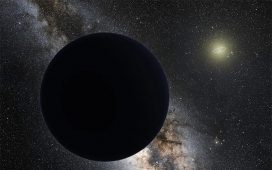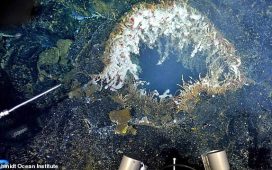NASA‘s Mars rover has found signs of ancient life in a “fascinating” rock on the Red Planet.
The rover discovered the arrowhead-shaped rock last week as it explored the northern edge of Neretva Vallis, an ancient river valley.
It contained chemical signatures and structures that “could possibly have been formed by life billions of years ago when the area had running water,” NASA said.
Scientists said further research was needed to confirm the discovery.
“Other explanations for the observed features are being considered by the science team and future research steps will be required to determine whether ancient life is a valid explanation,” NASA said.
The “Cheyava Falls” rock was named after a Grand Canyon waterfall and measures 3.2 feet by two feet.
Scans of the rock suggested it contained organic compounds.
But while NASA said these carbon-based molecules are “the building blocks of life,” it noted that they can also be “formed by non-biological processes.”
Perseverance project scientist Ken Farley described the rock as the “most puzzling, complex, and potentially important rock yet investigated” by the rover.
“On the one hand, we have our first compelling detection of organic material, distinctive colorful spots indicative of chemical reactions that microbial life could use as an energy source, and clear evidence that water — necessary for life — once passed through the rock,” he said.
“On the other hand, we have been unable to determine exactly how the rock formed and to what extent nearby rocks may have heated Cheyava Falls and contributed to these features.”
The rover also found dozens of millimeter-sized splotches which looked like leopard spots.
NASA said the splotches contain iron and phosphate, which are also seen on Earth as a result of microbe-led chemical reactions.
“These spots are a big surprise,” said David Flannery, astrobiologist from the Queensland University of Technology.
“On Earth, these types of features in rocks are often associated with the fossilized record of microbes living in the subsurface.”









